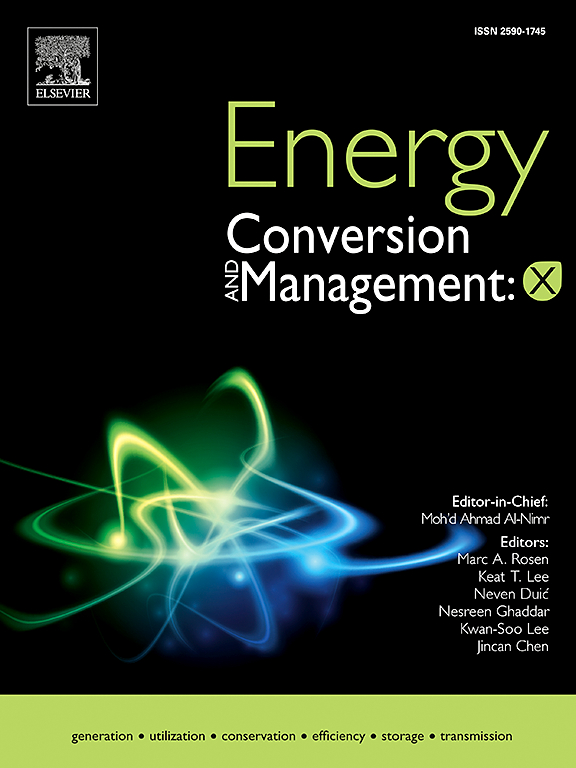温室气候条件的机器学习建模与优化
IF 7.6
Q1 ENERGY & FUELS
引用次数: 0
摘要
通过调整影响植物生长的各种温室操作参数,可以实现加强粮食安全和提高生产效率。这些参数包括温度、灌溉计划、湿度、补充二氧化碳、阳光照射以及在阴天或低光天使用人工照明。本研究展示了一个人工神经网络加速的动态温室模型的结果,该模型首次将所有这些参数一起考虑,并基于最小化栽培期间每公斤番茄产量的成本来优化操作条件。选定的设计变量是白天温度(白天和晚上都有人工照明),夜间温度(在黑暗时期),相对湿度和二氧化碳浓度。人工神经网络的使用大大减少了计算时间。与典型的温室环境设置(白天温度= 22°C,夜间温度= 18°C,相对湿度= 80%,二氧化碳浓度= 800 ppm)相比,优化的环境设置使生产成本降低了6%,从0.50美元降低到0.50美元。Kg−1 ~ 0.47 $. Kg−1。目标函数和设计变量的最优值为0.47美元。kg−1,昼温23.7℃,夜温16℃,相对湿度68.2%,CO2浓度627.7 ppm。本文章由计算机程序翻译,如有差异,请以英文原文为准。
Machine learning modeling and optimizing of greenhouse climate conditions
Enhancing food security and increasing production efficiency can be achieved by adjusting various operating parameters in greenhouses that influence plant growth. These parameters include temperature, irrigation scheduling, humidity, supplemental carbon dioxide, sunlight exposure, and the use of artificial lighting on cloudy or low-light days. This study presents the results of an Artificial Neural Network–accelerated dynamic greenhouse model, which, for the first time, considers all of these parameters together and enables optimization of operational conditions based on minimizing the cost per kilogram of tomato yield over the cultivation period. The selected design variables are daytime temperature (for both day and night with artificial lighting), nighttime temperature (during the dark period), relative humidity, and carbon dioxide concentration. The use of the ANN reduced computation time considerably. Compared to typical greenhouse environmental settings (day time temperature = 22 °C, night time temperature = 18 °C, relative humidity = 80 %, CO2 concentration = 800 ppm), the optimized environmental settings reduced production cost by 6 %, lowering it from 0.50 $.kg−1 to 0.47 $.kg−1. The optimum values of the objective function and design variables are 0.47 $.kg−1, 23.7 °C for daytime temperature, 16 °C for nighttime temperature, 68.2 % RH, and 627.7 ppm CO2 concentration.
求助全文
通过发布文献求助,成功后即可免费获取论文全文。
去求助
来源期刊

Energy Conversion and Management-X
Multiple-
CiteScore
8.80
自引率
3.20%
发文量
180
审稿时长
58 days
期刊介绍:
Energy Conversion and Management: X is the open access extension of the reputable journal Energy Conversion and Management, serving as a platform for interdisciplinary research on a wide array of critical energy subjects. The journal is dedicated to publishing original contributions and in-depth technical review articles that present groundbreaking research on topics spanning energy generation, utilization, conversion, storage, transmission, conservation, management, and sustainability.
The scope of Energy Conversion and Management: X encompasses various forms of energy, including mechanical, thermal, nuclear, chemical, electromagnetic, magnetic, and electric energy. It addresses all known energy resources, highlighting both conventional sources like fossil fuels and nuclear power, as well as renewable resources such as solar, biomass, hydro, wind, geothermal, and ocean energy.
 求助内容:
求助内容: 应助结果提醒方式:
应助结果提醒方式:


